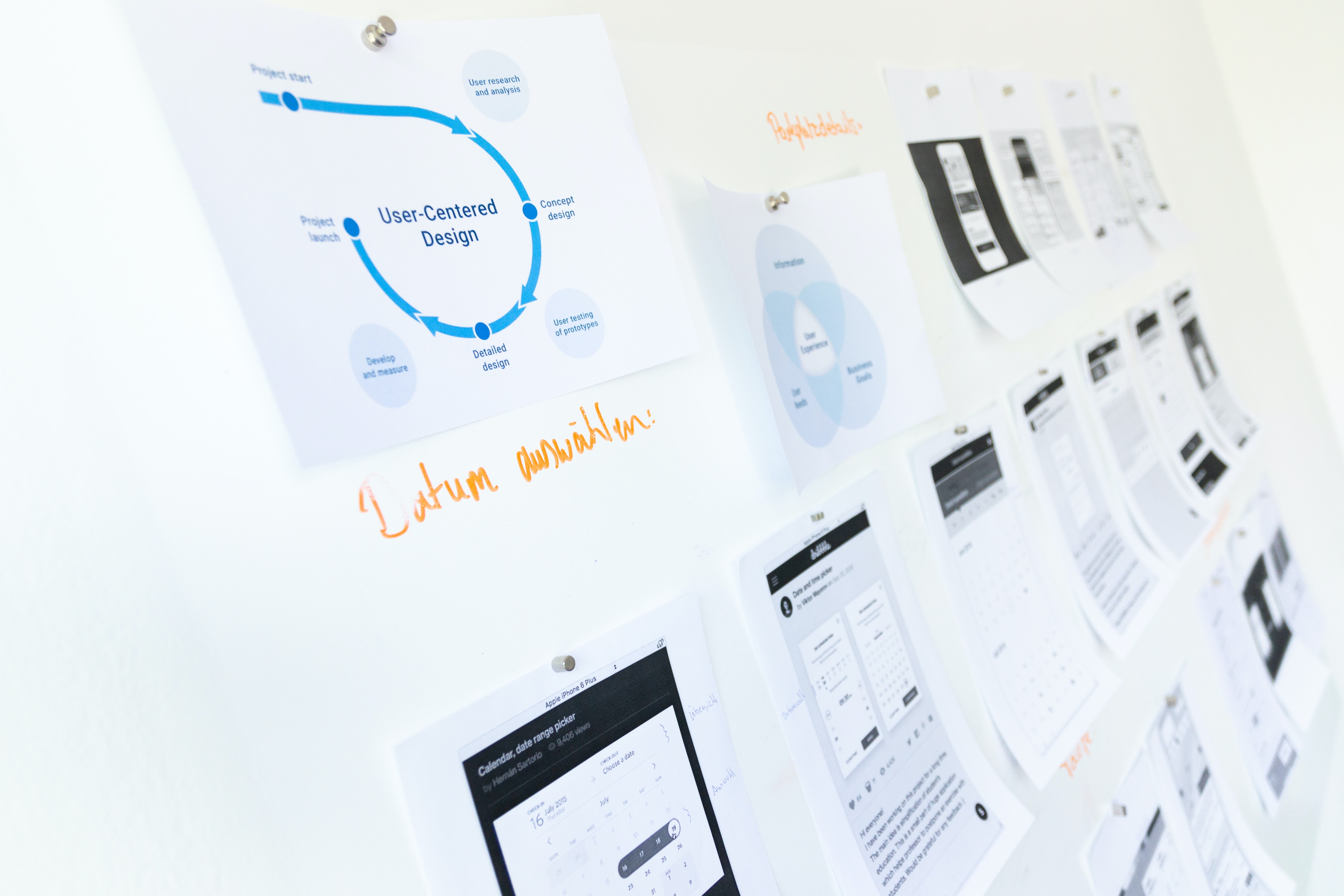The Importance of Sketching and Wireframing in Web Projects
Posted in Expertise • 8 minute read

Web and UX design is a multidimensional process that involves various stages, from conceptualising ideas to creating visually appealing and functional websites. Among the initial stages of web design, wireframing plays a crucial role in shaping the final product. In this article, we explore the importance of sketching a concept and wireframing and how they contribute to the overall success of a website project.
1. Visualizing Ideas and Conceptualising Design
Both sketching and wireframing provide designers with a platform to visualise their ideas and concepts before diving into the actual design process. Using a proper sketch or layout pad for a quick and rough idea of the layout, content placement and overall design structure. It helps designers explore different possibilities, experiment with layouts, and iterate on design concepts. By sketching out ideas, designers can refine their vision and align it with client requirements and user needs.
2. Efficient Communication and Collaboration
Wireframe prototypes serve as effective communication tools between designers, clients, and other stakeholders involved in the design process. These visual representations help bridge the gap between the designer’s vision and the client’s expectations. By presenting wireframes first, designers can effectively communicate design concepts, layout arrangements and user flows. This facilitates collaboration, encourages feedback and ensures that everyone involved has a clear understanding of the design direction.
3. User-Centric Design
Wireframing allows us to focus on the user experience (UX) aspect of web design. By creating wireframes, we can define the website’s structure, information hierarchy and navigation flow. This enables us to prioritise user needs and ensure a seamless and intuitive user journey. Wireframes help designers identify potential UX challenges and make necessary adjustments early in the design process, ultimately leading to a more user-friendly final product.
4. Iterative Design Process
It encourages an iterative design process, where designers can quickly experiment, make changes, and refine their designs. The low-fidelity nature of visuals allows for easy modifications and avoids the investment of excessive time and resources in refining high-fidelity designs. This iterative approach allows designers to gather feedback, identify potential design flaws, and make improvements early on, leading to a more polished and refined final design.
5. Efficiency in Development
This step in the design process helps streamline the development phase of a web design project. By creating detailed wireframes, designers can provide developers with a clear understanding of the design intent, interactions and functionality. This facilitates efficient collaboration between designers and developers, reduces misinterpretations and minimises the chances of costly design changes during the development stage. Wireframes act as a blueprint for the development team, ensuring a smoother and more efficient coding process.
To conclude, sketching and wireframing are invaluable steps in the web design process. They allow us to visualise ideas, communicate effectively with clients and stakeholders, prioritise user experience, facilitate an iterative design process and streamline the development phase. By incorporating these into the web design workflow, designers can enhance the overall quality and success of the final project, resulting in a visually appealing, user-friendly and functional website or web app.













